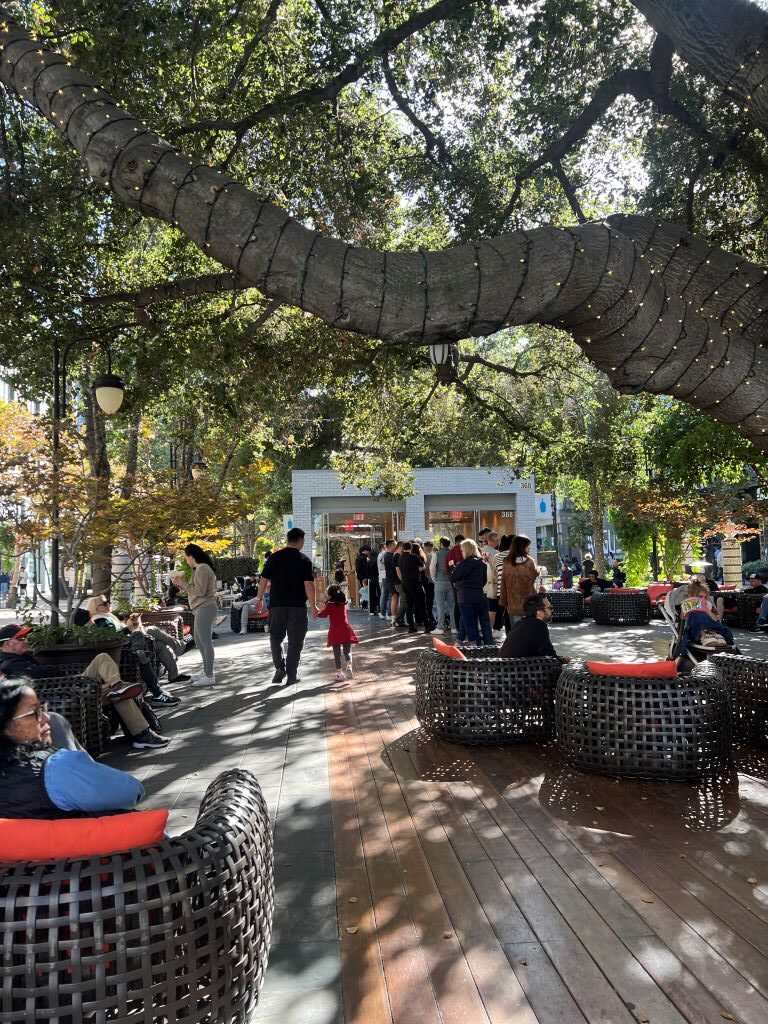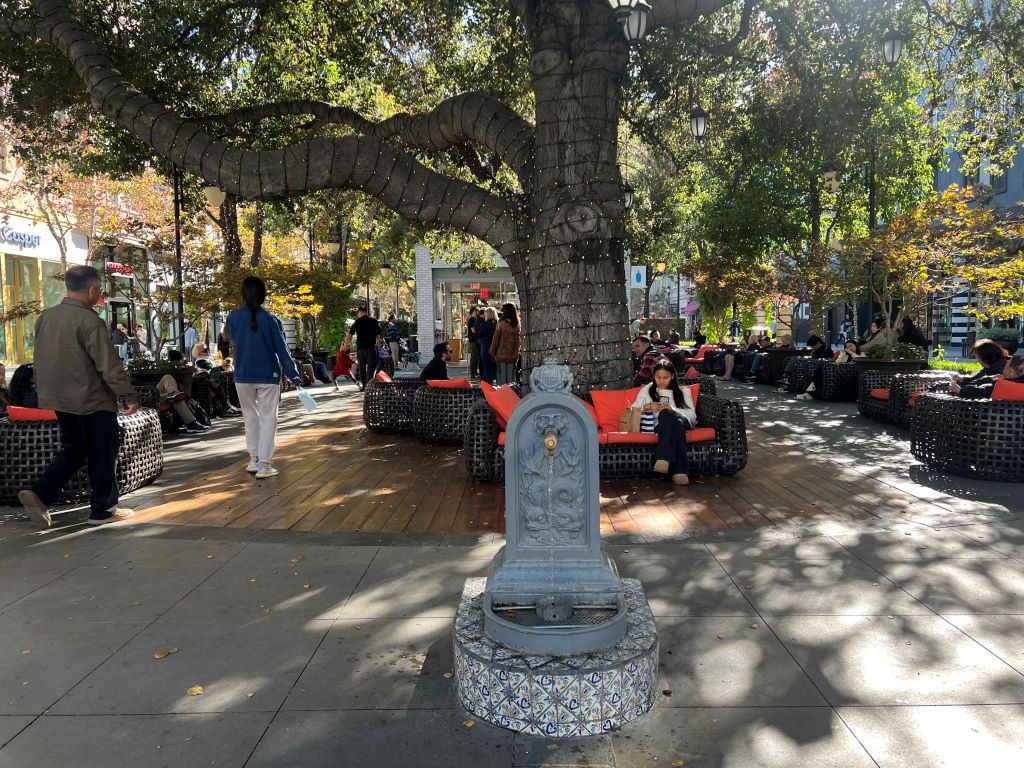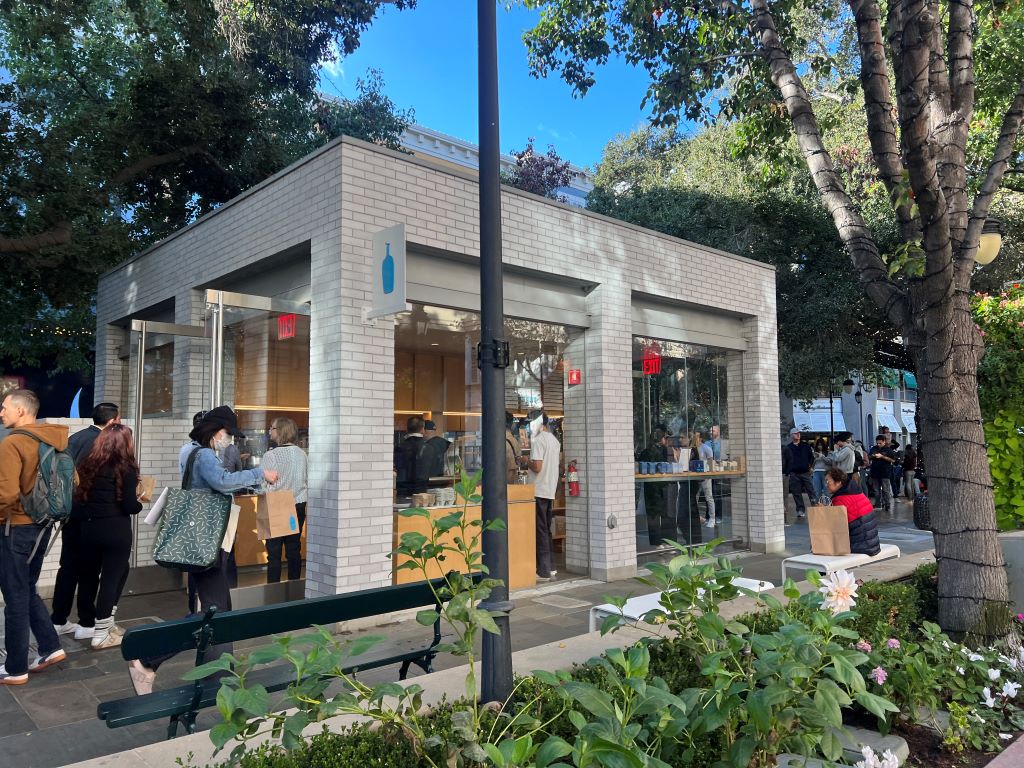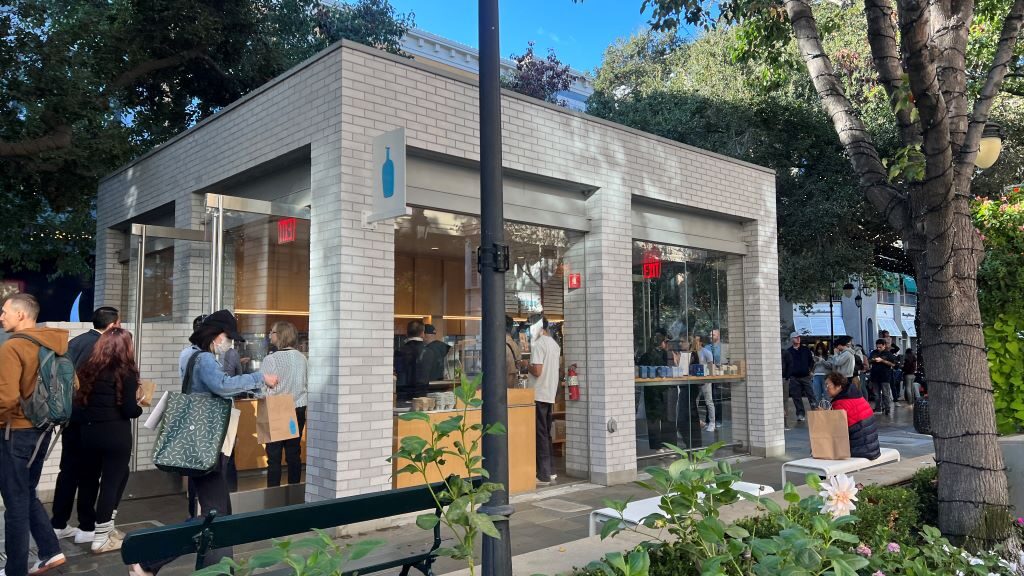
At Santana Row in San Jose, the Blue Bottle Coffee store captures attention with its European-inspired design. A shaded patio under a huge tree, cozy seating, and a fountain create the ambiance of a European plaza.

What struck me, however, was my assumption that Blue Bottle was a Japanese brand due to its minimalist design and precise brewing methods. To me, this coffee brand felt synonymous with Balmuda, a Japanese Electronics brand that prioritizes simplicity.

However, the truth surprises me. Blue Bottle is neither Japanese nor European. It was founded in Oakland, California, in 2002. While it embraces Japanese style, the brand’s actual roots are Californian. In 2017, Nestlé acquired a majority stake, expanding its reach to over 100 locations worldwide, including Japan, South Korea, and China.
Despite its true origins, Blue Bottle seems to benefit from the misconception of being Japanese. Although research shows that authenticity of origin enhances value, my observation flips this insight: when a brand’s origin is incorrectly perceived but aligns with its narrative, it can still elevates value. For Blue Bottle, the misperception of Japanese origins strengthens its image of precision and sophistication. Authenticity may not matter as much as perception.
***
Reference
Newman, George E., and Ravi Dhar (2014), “Authenticity Is Contagious: Brand Essence and the Original Source of Production,” Journal of Marketing Research, 51(3), 371–386.
It is well established that differences in manufacturing location can affect consumer preferences through lay inferences about production quality. In this article, the authors take a different approach to this topic by demonstrating how beliefs in contagion (the notion that objects may acquire a special aura or “essence” from their past) influence perceptions of authenticity for everyday consumer products and brands. Specifically, they find that due to a belief in contagion, products from a company’s original manufacturing location are viewed as containing the essence of the brand. In turn, this belief in transferred essence leads consumers to view products from the original factory as more authentic and valuable than identical products made elsewhere.

